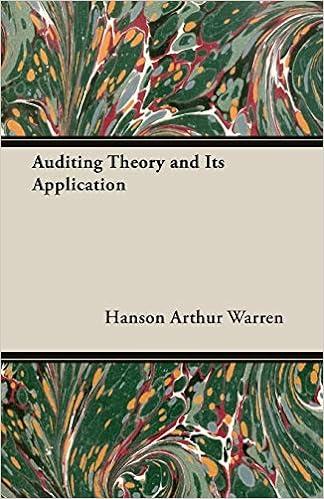Question
2. (a) For the following categories of activities assign an appropriate cost driver from the list provided against each activity in TABLE 1. Cost Drivers:
2. (a) For the following categories of activities assign an appropriate cost driver from the list provided against each activity in TABLE 1. Cost Drivers: Cost of Inspection/Test
Machine use hours
Direct Labour Hours Number of Purchase Orders
Number of Production Runs
Material Delivery/Invoices.
| Activities to choose product | cost drivers |
| activity centre 1 machining | machine use hour |
| activity centre 2 machining | machine use hour |
| Product assembly | number of production runs |
| Materal procurement activities | |
| product materials purchased | number of purchase orders |
| material reception storage | material delivery/invoices |
| materials issued/ production run | number of production runs |
TABLE 1
(b) TABLE 2 shows the cost drivers, the quantity and unit cost of the cost driver, and total activity cost. For two products A and B it is found that: The direct labour hours for products A and B are the same. It takes approximately four times as many machining hours in both cost centres to produce product B as product A. Product A requires one quarter of the materials purchased for B. Product A requires one third of the total Delivery notes/invoices. Product A has issued one third of the total materials issued per production run. Product A has issued one half of the planning per production run of that required by Product B. Product B requires twice as many machine set-ups as product A. The products have the same number of quality control inspections.
If the company produces 50 000 each of products A and B: (i) Complete TABLE 2 to determine the cost driver unit costings in column 5 for the activities of column 1. Show also the product quantity splits in column 4 of each activity for product A and B (e.g. quantity of cost driver Activity Centre 1 is shown as split 100 000 product A and 400 000 product B). (ii) Determine the overhead activity cost allocations to products A and B (using the activity proportions calculated in column 4) by completing TABLE 3. (iii) Determine the total overhead allocations to products A and B. (iv) Find the per unit product overhead cost allocations for each product.
| Activity involved to Produce Product | Allocated Cost of Activity | Activity cost driver | Quantity of cost driver | Cost driver unit cost /rate per cost driver |
| Activity Centre 1 Machining | 750 000 | machine use hrs | 500 000 (100 000 prod A 400 000 prod B) | |
| Activity Centre 2 Machining | 500 000 | machine use hrs | 250 000 | |
| Product assembly | 400 000 | direct labour hrs | 100 000 | |
| Material procrument activities | ||||
| product materials purchase | 600 000 | 5000 | ||
| product matrials reception/storage | 240 000 | 3000 | ||
| materials issued/production run | 225 000 | 1500 | ||
| Support activities | ||||
| production run planning | 150 000 | number of production runs | 1500 | |
| machine setting up tooling | 30 000 | setting up tooling labour hrs | 700 | |
| statistical quality control | 10 000 | sample inspection and test cost | 400 | |
| TOTAL |
TABLE 2.
| ACTIVITY | PRODUCT A | PRODUCT B | ||
| Activity Centre 1 Machining | 1.5*100 000 | 150 000 | 1.5*400 000 | 600 000 |
| Activity Centre 2 Machining | ||||
| Product assembly | ||||
| Materials procurement activities | ||||
| product materials purchase | ||||
| Product materials reception/storage | ||||
| Materials issued/ production run | ||||
| Support activities | ||||
| production run planning | ||||
| machine setting up/tooling | ||||
| statistical quality control | ||||
| TOTAL | ||||
TABLE 3.
Step by Step Solution
There are 3 Steps involved in it
Step: 1

Get Instant Access to Expert-Tailored Solutions
See step-by-step solutions with expert insights and AI powered tools for academic success
Step: 2

Step: 3

Ace Your Homework with AI
Get the answers you need in no time with our AI-driven, step-by-step assistance
Get Started


